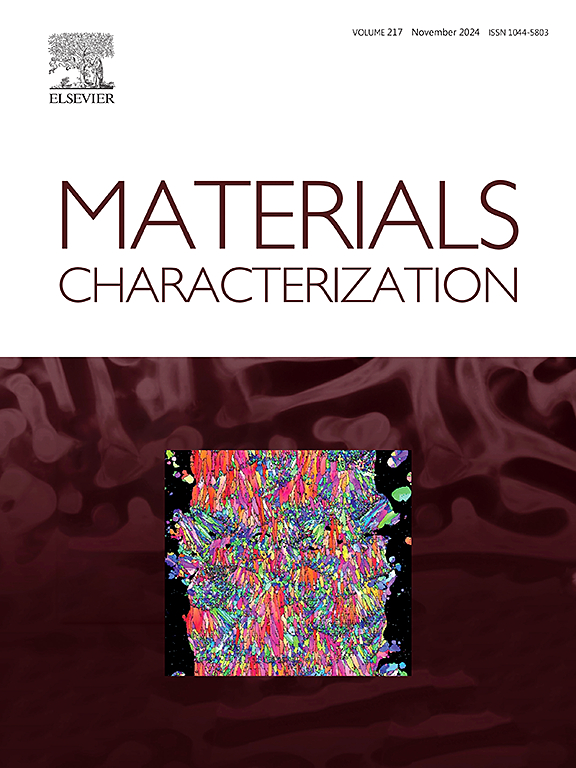激光增材制造18ni300 / 316l异质仿生结构的优异强度和延展性
IF 4.8
2区 材料科学
Q1 MATERIALS SCIENCE, CHARACTERIZATION & TESTING
引用次数: 0
摘要
与单相材料相比,非均相结构材料在实现强度和延展性的良好结合方面表现出巨大的潜力。为了充分利用这一潜力,采用可控激光直接能量沉积策略制备了18ni300 / 316l层状非均质结构材料。相对较软的316l含量较高的样品的断裂伸长率高达31.7%。相比之下,相对较硬的18Ni300含量较高的样品具有较高的抗拉强度,达到812 MPa,而塑性仅略有下降(28.5%)。18ni300 / 316l试样的显微组织由枝晶、等轴晶转变为柱状晶,由马氏体和奥氏体相组成。奥氏体晶粒从316l区扩展到18Ni300区,表现出外延生长的特征。拉伸试验中,界面处的“软”(316l层)和“硬”(18Ni300层)变形不均匀。较硬的区域诱发正应力,而较软的区域诱发背应力,导致材料的非均质变形诱发强化。异质结构工艺的新实现可能为克服强度和延性之间的权衡提供新的解决方案。本文章由计算机程序翻译,如有差异,请以英文原文为准。
Exceptional strength and ductility in 18Ni300/316 L heterogeneous bionic structures through laser additive manufacturing
Compared to single-phase materials, heterogeneous structural materials exhibit significant potential in achieving an excellent combination of strength and ductility. To harness this potential, 18Ni300/316 L layered heterogeneous structural materials were fabricated through a controlled laser direct energy deposition strategy. Samples with a higher content of the relatively softer 316 L exhibited fracture elongation of up to 31.7 %. In contrast, samples with a higher content of the relatively harder 18Ni300 exhibited higher tensile strength, reaching 812 MPa, with only a slight reduction in ductility (28.5 %). The microstructure of the 18Ni300/316 L samples transformed from dendritic, equiaxed grains to columnar grains, consisting of martensite and austenite phases. The austenite grains extended from the 316 L region into the 18Ni300 region, exhibiting characteristics of epitaxial growth. During tensile testing, the “soft” (316 L layer) and “hard” (18Ni300 layer) regions at the interface underwent uneven deformation. The harder region induced normal stress, while the softer region induced back stress, leading to heterogeneous deformation-induced strengthening of the material. The novel implementation of the heterogeneous structure process may provide a new solution for overcoming the trade-off between strength and ductility.
求助全文
通过发布文献求助,成功后即可免费获取论文全文。
去求助
来源期刊

Materials Characterization
工程技术-材料科学:表征与测试
CiteScore
7.60
自引率
8.50%
发文量
746
审稿时长
36 days
期刊介绍:
Materials Characterization features original articles and state-of-the-art reviews on theoretical and practical aspects of the structure and behaviour of materials.
The Journal focuses on all characterization techniques, including all forms of microscopy (light, electron, acoustic, etc.,) and analysis (especially microanalysis and surface analytical techniques). Developments in both this wide range of techniques and their application to the quantification of the microstructure of materials are essential facets of the Journal.
The Journal provides the Materials Scientist/Engineer with up-to-date information on many types of materials with an underlying theme of explaining the behavior of materials using novel approaches. Materials covered by the journal include:
Metals & Alloys
Ceramics
Nanomaterials
Biomedical materials
Optical materials
Composites
Natural Materials.
 求助内容:
求助内容: 应助结果提醒方式:
应助结果提醒方式:


